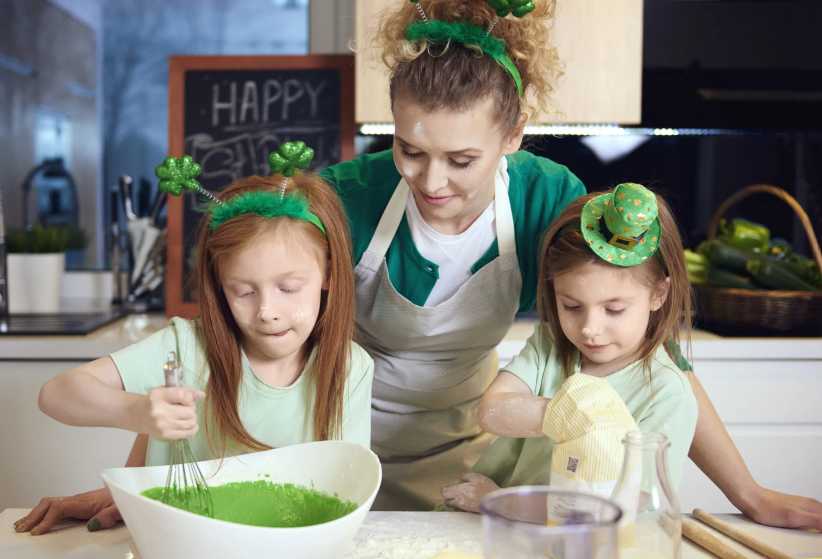As the temperatures plunge and sick days loom, did you know fermented foods can boost your family’s immune system?
Fermented foods contain the beneficial bacteria Lactobacillus acidophilus. This friendly organism consumes the natural starches and sugars in foods. At the same time, it creates several byproducts, including lactic acid, the agent responsible for preserving those foods.
As the bacteria do their work, they enhance the nutritional value of the food by increasing its digestibility, enzyme level, and vitamin content. Fermentation can decrease the gas-producing compounds in legumes, increase the availability of certain nutrients like the vitamin B group, preserve levels of nutrients like vitamin C, and decrease the level of compounds that may interfere with nutrient availability.
If you or your child has taken antibiotics, try fermented foods before trying probiotic supplementation. Fermented foods can reintroduce beneficial bacteria to rebalance the intestinal flora. They may also help treat diarrhea and irritable bowel syndrome.
You may already be enjoying fermented foods. Natural pickles, sauerkraut, miso, tofu, tempeh, kimchi, kombucha tea, and fermented cheeses all fall under the fermented banner.
The real deal
What are the basics of fermentation? Adding salt to fresh produce kills the harmful bacteria present while allowing the good Lactobacillus bacteria to thrive. This preserves the food while also developing a distinctive tangy flavor.
But many commercially available pickled products are high in salt and lack beneficial bacterial cultures. Most jarred pickles on supermarket shelves are simply cucumbers in a vinegar solution and are not fermented.
When buying fermented foods, look for “live cultured” pickles or sauerkraut. To be sure, call the manufacturer to ask if the product has live cultures. Shopping at a health food, ethnic, or “fresh” store may be your best bet to find old-fashioned barrels of pickles or sauerkraut near the deli counter. Or look in the refrigerated section of your usual supermarket.
Making your own at home can be a fun kitchen experiment with the kids this winter. Any vegetable can be fermented, including carrots, radishes, green beans, eggplant, and cabbage. A terrific resource is the National Center for Home Food Preservation, as well as several books written by Sandor Katz.
Christine Palumbo is a Naperville-registered dietitian nutritionist who is a new Fellow of the American Academy of Nutrition and Dietetics. While growing up, she loved sauerkraut and is inspired to make her own after researching this column. Find her at Christine Palumbo Nutrition on Facebook, @PalumboRD on Twitter, and Chris@ChristinePalumbo.com.
Homemade sauerkraut
INGREDIENTS:
1 small cabbage head (one-and-a-half to two pounds)
1 tbsp. salt
1/2 cup filtered water
DIRECTIONS: Sterilize a one-quart sized wide-mouth Mason jar and all tools (knife, canning funnel, metal mixing bowl) by dipping into boiling water for one minute. Air dry.
Wash cabbage head and remove outer leaves, saving one of them. Quarter cabbage, cut out core, and cut into 1/2-inch (or thinner) slices.
Place cut cabbage into metal bowl and sprinkle with salt. Crunch up cabbage with your hands and allow it to sit for 5 minutes so the texture softens.
Using the funnel, stuff cabbage and any liquid that appears into the Mason jar, tapping it periodically to make it fit. Pour filtered water into metal bowl to get out any extra salt, then pour over cabbage. Top cabbage with reserved cabbage leaf. Keep the funnel in your jar to help press down the cabbage.
Take a quart sized freezer bag and fill it with water part way. Place this bag in the funnel. This will act as a weight to keep the cabbage leaves pressed down under the liquid.
Store cabbage in a cool, dark place inside a bowl to catch liquid in case it bubbles over.
Daily for the next couple weeks:
Press down leaves to ensure cabbage leaves are under water. If not, take 1/2 cup water and 1 tsp. salt and heat until salt dissolves. Cool liquid then add the water to the cabbage as needed.
Skim off any foam.
Every week taste your cabbage. After two to four weeks when it has the desired sourness, discard the top cabbage leaf. Screw on the jar lid and store sauerkraut in the refrigerator.
Used with permission by Wendy Jo Peterson, MS, RD, CSSD, culinary nutritionist
NUTRITION FACTS: 120 calories, 8 g carbohydrate, 0 g protein and fat, 4 g fiber, 880 mg sodium, 24% DV vitamin C.
Image used with permission by LizOnFood.com.





















